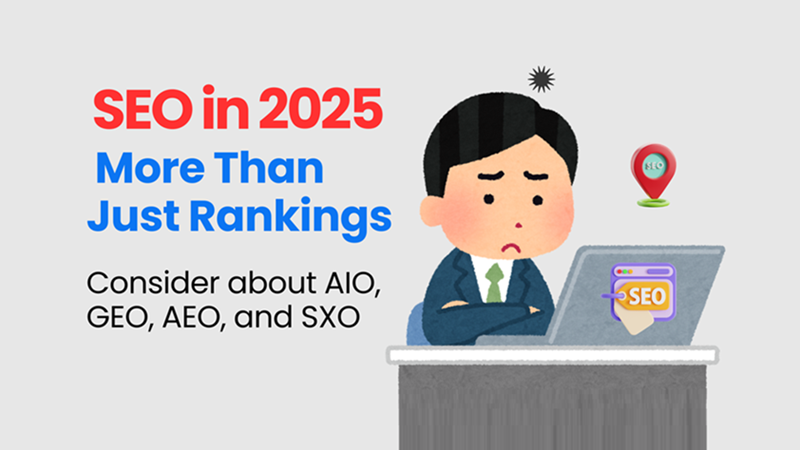It’s not enough to just get at the top of Google results these days when it comes to SEO (Search Engine Optimization). It’s broader and more exciting! You should consider about SEO, AIO, GEO, AEO, and SXO. Let’s break them down in a useful way:
1. SEO – Will You Be at the Top?
The classic goal is to show up on Page 1 of Google or other search engines. Yes, fundamental SEO is still important. This includes finding the right keywords, getting quality backlinks, having a strong site layout, and writing relevant content.
2. AIO – Will AI Get to Know You?
AI optimization involves making your brand and content easy for AI to grasp and add to their knowledge.
How to do it:
– Try to get your content into AI training data using sites like Wikipedia, GitHub, forums, and others.
– Use structured formats (tables, JSON-LD, schema markup).
– Make sure the branding is consistent and the information is clear and correct.
For example, people notice your software library because it has good documentation on GitHub, StackOverflow, and Wikidata.
3. GEO – Will AI Suggest You?
Generative Engine Optimization is about AI tools showing or citing you in real time.
How it works:
– Use straightforward, factual styles like headings and bullet lists.
– Include helpful schema like FAQ and advantages and disadvantages.
– Make it easy for AI to summarize your content.
Because of clear formatting and credible citations, your travel blog shows up in ChatGPT for ” Best cities in Europe for people who work online and travel.”
4. AEO – Will You Be the Answer Box?
Answer Engine Optimization is the process of making content that will get featured snippets and AI response boxes, which are like Google’s quick answers.
What to do:
– Begin with clear, short replies to frequent inquiries.
– Use How-To markup and FAQ schema.
– Try to provide people responses that don’t require them to click on anything else.
Example: A finance blog clearly answers “What is capital gains tax?” in the first paragraph, earning a spot in Google’s AI Overview.
5. SXO – Will Users Take Action After Clicking?
Search Experience Optimization means we should care about what users see and feel after they click on our page
Key points:
– Build fast‑loading, organized web pages.
– Follow the rules of CRO (Conversion Rate Optimization): make CTAs simple and keep clutter to a minimum.
– Make sure the content is what users are looking for and write it in a way that’s easy to read quickly.
Example: An ecommerce page loads instantly, answers queries, and converts 3× better than slower competition.
What This All Means
Because AI and search engines are changing quickly. For your content to do well in 2025, it needs to:
– Be found by search engines (SEO)
– Be taught by AI systems (AIO)
– Be suggested or summed up by AI tools (GEO)
– Be chosen as the response in featured snippets (AEO)
– Use UX and conversions (SXO) to turn visits into actions.
SEO – AI Strategy Table
| Area | Key Action | Example |
| SEO | Optimize keywords, backlinks, site structure | Blog ranks on Google |
| AIO | Use schema, documentation, structured data | Tools understand your brand |
| GEO | Provide easy-to-use summaries and schema | Content cited by AI chat |
| AEO | Give crisp answers with FAQ/How‑To markup | Wins featured snippet |
| SXO | Improve speed, clarity, CTAs | Better conversions after clicks |
Final Thoughts
SEO isn’t just about where you show up anymore. It’s also about how AI sees you, what it suggests from you, when it uses your content as the solution, and how real people use your pages. Make sure your content is clear, well-organized, and really useful. Both AI bots and people will appreciate it!



